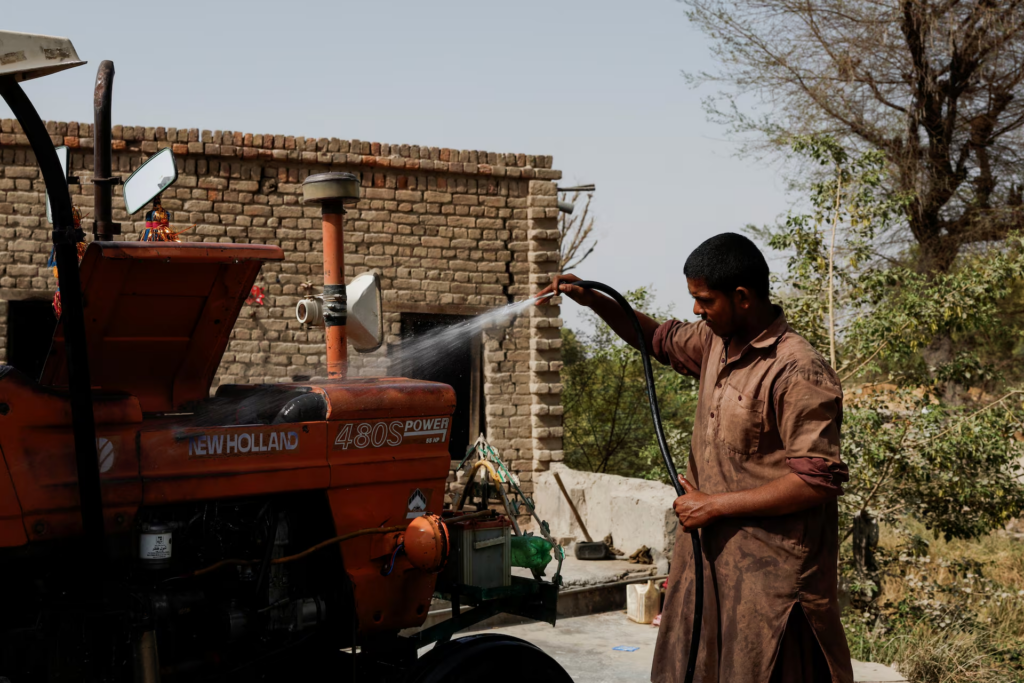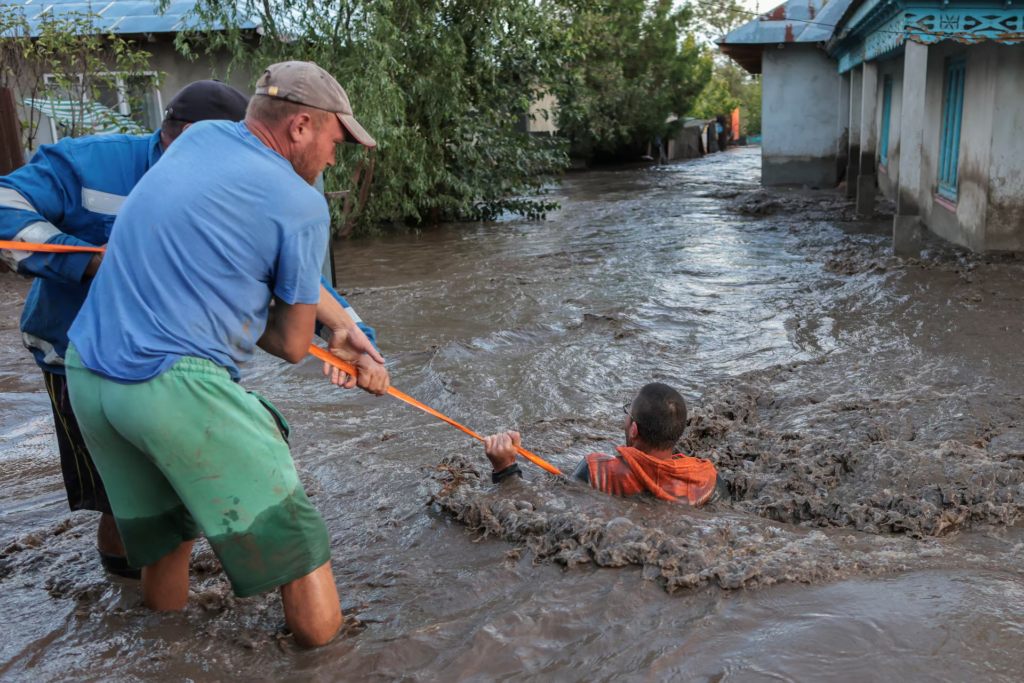- Sadiq Khan
- 1 Hour ago
2024 brings the climate fight home
-
- Syeda Masooma
- Dec 30, 2024

Climate change is not just a looming threat anymore. It’s here, it’s real and 2024 made that undeniably clear.
This year, it was not just the climate activists and mainstream celebrities speaking up on the climate issues, but governments around the world also started integrating climate considerations into their local and multinational policies.
Let’s look at all the times from the outgoing calendar year that really jolted us into confronting the reality of climate change. And brought the reality check right here at home in Pakistan.
LIVING IN SMOGISTAN
This has to be atop the list, and not just because Pakistan is still enveloped in a thick grey blanket that makes it hard to breathe. Punjab and Islamabad in general, and Lahore in particular, went through terrible air pollution in 2024, with the air quality index (AQI) crossing to the critical level of being hazardous. Even now in December, the AQI of Lahore is bad enough to keep the city firmly lodged atop the list of most polluted cities in the world. So basically Kya Dilli, Kya Lahore persists.

The usual “Indians burning crops caused smog in Pakistan’s Punjab” made the headlines once again. The provincial government opted for artificial again rain as well. The situation got so bad this year, that major cities in Punjab went through a ‘strict smog lockdown’ in November 2024. Schools were shut down, offices closed, and a severe crackdown unleashed on smoke-emitting vehicles. While all these measures eventually resulted in notable decline in air pollution levels, the menace of smog continues unabated. Earlier in December, Lahore installed an anti-smog tower – the first of its kind in Pakistan. The ongoing measures are commendable, but the issue will persist until the root cause – industrial pollution – is addressed.
CLIMATE CHANGE BECAME PART OF EDUCATIONAL CURRICULA
It was not all bad though. In September 2024, Pakistan launched its first educational curriculum on climate change. The project was carried out by the United States in partnership with the Teachers’ Resource Center (TRC) in the capital Islamabad.
Aimed at students from grades 1-10, the project will educate the new generation on the science behind climate change and equip them with the tools needed to protect the environment.
The curriculum is designed under the Climate Change Awareness and Action for Nature, Diversity, Livelihoods, and Ecosystems (CANDLE) initiative and also includes a training portion for the educators.

As we reach the end of 2024, it would behoove us to remember this outgoing year as a wake-up call for Pakistan, and for the humanity in general. With the hottest ever recorded temperature, devastating weather events, and increased – yet unguided – focus on solar energy now affecting our lives on a daily basis, inaction is not an option anymore. We need to recalibrate our focus on sustainability, towards national level renewable solar and wind energy and away from politically motivated large hydropower dams. Our socio-economic policies and politico-legal action should be towards making the country livable for the people, not just governable for the state.
RENEWABLE ENERGY STOLE THE SPOTLIGHT
Now let’s look at the world beyond Pakistan as well. With the momentum developing for net zero carbon emissions, as well as the increasing energy prices all over the world, renewable energy really became the star of the climate show for 2024. At the start of the year, the International Energy Agency (IEA) predicted global renewable capacity to increase “over 5,520 GW during 2024-2030, 2.6 times more than deployment of the last six years (2017-2023).”

In Pakistan’s context as well, the solar panel imports and installed capacity increased from Rs115 billion in 2020 to Rs592 billion in 2024. A report warning the risks of solar panels uptake, published last month by the Lahore University of Management Sciences (LUMS) showed that the installed capacity also surged from 5 GW in 2020 to 30 GW in Pakistan during first few months of 2024.
WARMEST YEAR ON EARTH, EVER
With everything that has been happening, it came as a surprise to no one that 2024 brought the highest temperatures ever recorded on earth. European Union’s (EU) Copernicus Climate Change Service (C3S) data said that from January to November 2024, the average global temperatures exceed 1.5 degrees Celsius (2.7 degrees Fahrenheit) above the 1850-1900 pre-industrial period. This comes less as a surprise and more as an uncomfortable reminder, after 2023 was also the hottest year ever recorded in the last 100,000 years, and 2024 now has broken even that record.

For Pakistan, June 2024 brought the worst ever heatwave ever experienced by the country, that led to deaths of nearly 600 people in the southern part of the country. The Pakistan Meteorological Department (PMD) started issuing the alerts from as early as May and recorded severe conditions starting May 21. In Sindh, particularly the provincial capital Karachi, the recorded heat went up as high as 42°C. Further down south, in Thatta and Badin the mercury climbed up to 44°C. The extreme heat led to at least 2,500 reported cases of heatstroke.
However, you never know, 2025 might break that record too?
EXTREME FLUCTUATIONS IN WEATHER
With the overall temperature exceeding any benchmark ever reached before, this global warming also manifested in various dangerous ways. Heatwaves, hurricanes, floods and drought made their presence more noticeable throughout this year. Droughts hit Italy and South America; floods caused havoc in Nepal, Sudan and Europe; heatwaves scorched Mexico, Mali and Saudi Arabia that killed thousands; and disastrous cyclones in the US and the Philippines left people reeling in the aftermath of the damage they caused.

In Pakistan, the PMD warned of drought and floods caused by the extreme heat. However, the impact of the extreme temperatures did not end with the summers. The 2024 winter also turned out to be the warmest winter for the country. According to PMD report, November 2024 marked a deviation of +2.89 °C than the country-average with temperatures.
“The national mean monthly temperature of 20.75°C for Pakistan was significantly warmer by +2.89 °C than the country-average of 17.87°C and ranks as the highest mean temperature in November (previous record was 19.87 °C in 2011) during the past 64 years,” PMD report said.
SCIENTISTS AND ACTIVISTS CONTINUED THE FIGHT
United Nations Climate conference ‘COP29’ took place in Baku, Azerbaijan this year, and brought together global scientists, experts, activists and political leaders. The two weeks of debates and discussions concluded with an agreement to channel “at least $300 billion” every year until 2035 into climate control efforts. The middle-income countries were not entirely happy with the conclusion, especially since Trump’s reelection overshadowed much of the conversation on future climate action.

Pakistan said its piece at the conference too and spoke up on the billions of dollars of damage that was wreaked by 2022 floods. Pakistan’s share in the global carbon emissions is less than one per cent, yet the country remains one of the top five countries most vulnerable to climate change. Pakistan also advocated for including means of implementation (MOI) of the global goal on adaptation (GGA) targets. MOI could generally be understood as the financing options for climate goals.
The year 2024 is almost over, but the menaces of smog and rising global temperature are far from it. It will take a truly unified global effort if these issued are to be tackled. Prioritising sustainability over short-term goals is no longer an option, it’s a necessity. Only by aligning our social, political, and economic goals with the objective of sustainability can we hope for a liveable world, for ourselves and for future generations.





